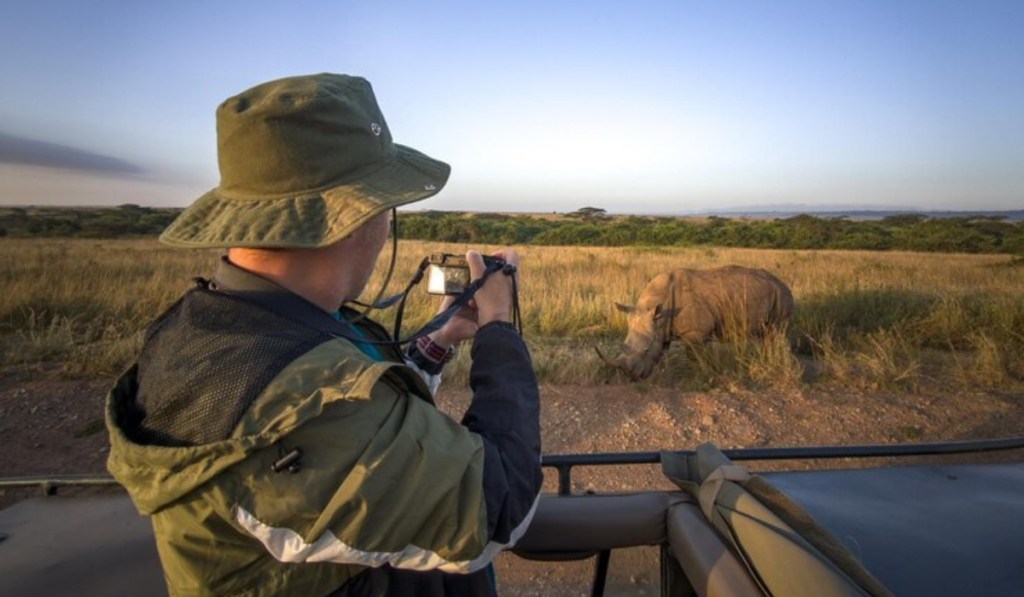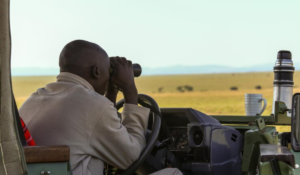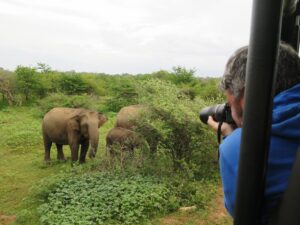How to Shoot Africa’s Big Five Safari Animals (with a Camera)

A wildlife enthusiast will find it thrilling to embark on an African Safari in order to capture the iconic Big Five with their camera. Each encounter is a chance to see these amazing creatures in their habitat, from the stealthy African elephant to the majestic leopard. This comprehensive guide will show you how to photograph Africa’s Big Five Safari animals using your camera. It also includes important tips and considerations.
Understanding the Big Five

It’s important to know the meaning of “Big Five” before diving into photography. The term “Big Five” was first used during Africa’s colonial era to describe the five most dangerous animals to hunt, namely the African bush elephant (also known as the African buffalo), the black rhinoceros and the lion. The term is now used to describe Africa’s most famous wildlife species. Travelers from all over the world flock to Africa to see these majestic creatures in their natural habitat.
Booking Considerations
Consider the best time to visit, which is typically late spring and early summer during the calving season when wildlife sightings are abundant. Consider when to go, usually in late spring or early summer, during the calving period. Wildlife sightings will be abundant. Research reputable safari companies and outfitters that are known for their expertise on wildlife photography, conservation, and other areas.
Packing Essentials:
It is important to pack the right photographic gear for a successful Safari expedition. Make sure you pack interchangeable lenses for your cameras to allow you to adapt to the different conditions. Do not forget to bring extra batteries, memory cards and a tripod. Clothing that is both aesthetically pleasing and protects you from the elements should be chosen, such as hats and sunblock.
Preparation:
To capture stunning wildlife photos, preparation is essential. Organise your equipment the night before, and get up early in the morning to capture the animals at their most active. Keep your camera handy and alert for any wildlife sightings that may occur throughout the day.
Tips on how to shoot each of the Big Five animals:

- Leopard: A telephoto lens with a fast shutter speed will capture the leopard’s stealthy movement. You can photograph them while they are lounging on trees or prowling in the bush.
- African Bush Elephant – Photograph elephants in the golden hour of morning or evening to get optimal lighting. Include the landscape around them to show their majesty and size.
- African Buffalo: Be cautious and capture the fine details on their horns. Keep a safe distance and be aware of their unpredictable nature.
- Black Rhinoceros – Be extremely cautious when taking photos of rhinos, as they have poor eyesight and a tendency to charge if threatened. Zoom lenses are a great way to capture the unique behavior of these animals in their natural environment.
- Lion: It is best to photograph lions in the morning, when they are at their most active. Zoom in to capture the regal mane of lions and their powerful presence, while keeping a safe distance.
Safari Photography Tips

Use the golden hour to get optimal lighting and use fast shutter speeds for freezing motion and capturing wildlife in action. Learn the exposure triangle, and try out manual mode to have more control over your camera settings.
Stay Alert:
Be aware of your surroundings and familiarize yourself with the animal habits you may encounter. No matter which animal you see on your safari, be patient and enjoy the chance to observe these majestic creatures in their natural habitat.
Final thoughts: Taking photos of Africa’s Big Five Safari Animals with your camera can be a once in a lifetime experience. It requires planning, patience, and preparation. Following these tips and guidelines will help you capture amazing wildlife photos and create lasting memories from your safari experience. Pack your gear and embark on your safari adventure to experience the beauty of Africa’s iconic animals.


